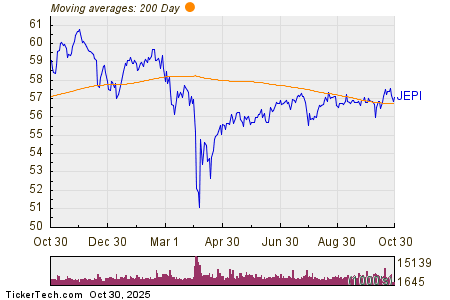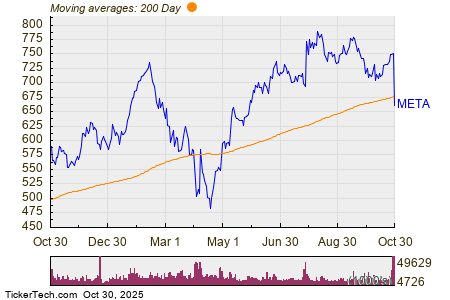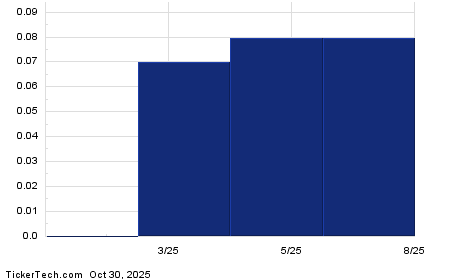
Much of what is thought and believed about the stock market is based upon fallacy and a lack of understanding, which was easily seen in the comments section of one of my recent articles. It seems that many investors felt quite strongly that a long-term bear market is simply an impossibility. And, they attempted to outline their reasoning in the comments section of my latest articles. So, I am going to discuss the issues they brought up in a series of articles over the coming weeks.
I will be breaking the discussion down into six general topics raised in the comments section. Due to the areas of discussion I am going to cover, I am going to split this discussion up into three articles, as it would be too long for just one article. These are the topics which will be covered.
1 – “You need to take a more balanced approach incorporating fundamental analysis such as corporate earnings and economic data”.
2- “Big banks are swimming in cash”.
3- “The Fed will provide liquidity to keep us out of trouble”.
4- “We do not have the same conditions as 1929”.
5 – Outright disbelief in the potential for a long-term bear market.
6- How does one approach investing during a long-term bear market?
Since we are dealing with financial markets, which are non-linear and uncertain environments, I want to make it clear up front that a depression is obviously not a foregone conclusion. Therefore, I will end this series of articles outlining what I will need to see over the coming two years to tell me whether we are indeed heading into a 13-21 year bear market. And, if the market takes the path I lay out over the coming two years, then it will make a long-term bear market a high probability. Until such time, I am going to be taking my cues from the market action week by week and month by month, and will not likely take on an extreme bearish posture until I see strong confirmation in the next year or two. But, I will likely be raising a lot of cash in the coming months.
So let’s get started.
1 – “You need to take a more balanced approach incorporating fundamental analysis such as corporate earnings and economic data”
Those that have followed my analysis over the last 13 years know that I have caught most (but clearly not all, as we are not perfect) of the major turns in all the assets I cover. While I really only cover the SPX and sometimes the metals publicly over the last several years, our clients that have been with me for over a decade know how well we have done. In fact, this was recently said by a client who has been with me for a bit over a decade:
“The number of different markets, i.e., TLT, Metals, Oil, IWM, SPX etc., that you have absolutely nailed over the years is legend.”
Yet, those new to my analysis view it as some form of voodoo, and often complain that it lacks substance since I do not use fundamental analysis in my prognostications of the overall market direction. In fact, many of our members come to us with a very skeptical view of what we do, until they actually learn the details in greater depth:
“For too many years I thought it was voodoo…. Not anymore . . . I know I fought this.. but damn it works . . . My accounts are killing it.. returns I did not think possible.”
As I have explained in many prior articles, I was born and raised in the early part of my investing career on fundamental analysis, using earnings, economic data and many other factors to assess the stock market. However, as I progressed in my investing career, I learned that much of that was actually noise. And, when I tuned out that noise and began to place a greater focus on market psychology and investor mass sentiment, it made me a much better investor, who was ultimately less surprised by many of the moves the market takes (despite it surprising most other market participants). And, I have imparted the same to my subscribers and clients, who convey the same perspective:
“I used to read news articles that backed up the trade I was in. Until I found Avi and his team and he said ignore the news and only pay attention to the price. That’s when I actually started making money – 11 years ago.”
With regard to earnings, I will simply state my view that earnings lag stock price. If you look closely at historical trends, you will see earnings are usually at their worst at the bottom of market negative trends, and they are usually at their best at the top of those trends, with the markets and stock prices turning well before we see them in the earnings of companies. Therefore, earnings often lag market turns.
In fact, this is what one of my clients noted about earnings:
“Having worked for many listed companies and regarded as an insider with access to company confidential information, I have sometimes struggled to understand the correlation between business results and the share price.”
I wrote an article discussing this exact issue and explaining the reasons as to why this is so. And, if you are interested in reading more of my in-depth view on this matter, you can feel free to read it here.
Now, as far as using market fundamentals, well, while I will view fundamentals as being important in smaller companies, I see them as being much less so in larger companies. In fact, I see them as wholly useless when it comes to the market as a whole. And, yes, I have written about this in the past as well, and you can read further details on this here.
Along the same lines of this discussion, one person proposed in one of my recent articles that “at the center of sentiment trends lies the perception of what fundamentals are!” I am sorry, but this represents purely circular reasoning which says absolutely nothing other than their misguided and unsubstantiated feeling/belief that fundamentals are controlling.
But, if you read the articles I have cited with an open mind, you will reasonably understand why this is a complete fallacy. In the overall stock market, fundamentals lag price, not lead it. Moreover, consider how negative fundamentals are even
“`html
Market Fundamentals: The Real Drivers Behind Market Movements
Understanding Market Direction
It’s a paradox of the financial world – fundamentals seem to be ignored during an uptrend, whereas positive fundamentals are ignored during a downtrend. Many investors firmly believe that fundamentals play a crucial role in determining market direction. However, numerous studies and market evidence suggest otherwise.
The Psychology of Market Behavior
Investors have long sought to understand the driving forces behind market movements. A seminal 1997 paper titled “Large Financial Crashes” published in Physica A., a publication of the European Physical Society, delves into the phenomena of herding behavior within financial markets, drawing fascinating analogies to the complexities of the human mind and macroscopic scale intelligent behavior.
Furthermore, a groundbreaking study published in the Europhysics Letters in 1997 revealed that even in the absence of external factors, market behavior mimicked patterns observed in the real economy. This challenges the conventional wisdom that fundamentals are pivotal in dictating market movements.
The Case for Technical Analysis
Renowned financial analyst, Avi, advocates for focusing solely on price patterns rather than news or fundamentals. He underscores the limitations of traditional market analysis and emphasizes the efficacy of this unorthodox approach in predicting market twists and turns.
Anecdotal evidence from numerous clients supports this viewpoint, with many attesting to the effectiveness of Avi’s analysis in contrast to traditional fundamental methods.
Banking System Concerns
Amidst the specter of a potential bear market, gaze turns to the stability of the banking system. Despite reassurances from the Federal Reserve and banking regulators following the 2008 financial crisis, recent market declines have exposed vulnerabilities in the system.
Instances of banking issues surfacing during the market decline in October 2022 have raised alarms. While these issues affected large banks, the systemic risks lurking beneath the surface of balance sheets pose a significant and imminent threat.
The prevailing sentiment among investors is one of uncertainty and skepticism regarding the solidity of the banking system, despite statements to the contrary from regulatory authorities.
“`
The Reality of Banking Stability in 2022
It is astounding how easily we forget the lessons of history, particularly the financial kind. An alarming thread of complacency seems to be woven into the fabric of contemporary consciousness as evidenced by recent comments on banking stability. Take for instance the assertion that “no banking crisis is in sight” or the belief that the banking industry is now idyllically well-regulated. These myopic notions reflect a widespread lack of awareness regarding the precarious state of the banking system. In reality, the banking sector faces myriad significant and potentially destabilizing issues lurking within its balance sheets – issues that dwarf those present in the lead-up to the 2008 financial crisis.
Revisiting the FDIC Backstop
Many individuals subscribe to the notion that the Federal Deposit Insurance Corporation (FDIC) acts as a failsafe for their bank accounts. It is akin to a comforting, warm blanket that lulls people into a false sense of security. However, one profound remark points out that the FDIC’s capacity to backstop bank defaults has limitations. The FDIC indeed possesses about 1% of total US bank deposits to mitigate sporadic bank failures. Nevertheless, a widespread default scenario could swiftly deplete the FDIC’s resources, rendering it ineffective in safeguarding the financial well-being of depositors on a broad scale.
The FDIC’s Historical Struggles
On the cusp of recovery from the 2008 financial crisis, the FDIC’s contingent loss reserve incurred a debilitating $6.2 billion hit in the third quarter of 2010, plunging the Deposit Insurance Fund into a deficit exceeding $21 billion. This financial quagmire was exacerbated by the FDIC exhausting its complete 2010 assessments. These historical facts serve as grim reminders of the FDIC’s fragile capacity to weather a significant banking storm.
Relying on Industry “Experts”
Some are wont to dismiss concerns about the banking sector, deferentially deferring to industry insiders who insist that all is well. This inclination is puzzling, given the glaring failure of these very same “experts” to foresee the cataclysmic 2008 financial crisis. Even luminaries in the financial community, like former Federal Reserve Chairman Paul Volker, expressed incredulity at the sudden breakdown of the financial markets. The Wharton Business School also highlighted the blatant denial exhibited by financial practitioners towards the impending crisis. Can we, in good conscience, place our faith in assurances from Ms. Yellen, or those industry insiders who failed in their predictive duties on such a grand scale?
A Cautionary Revelation
As the market stabilized in 2009, the banking industry experienced a reprieve, sparing it from further erosions of bank holdings. However, in the face of a protracted bear market, the resilience of our financial system would undoubtedly be tested far more rigorously than in the relatively brief crisis of 2008. Moreover, the oft-cited role of the Federal Reserve in rescuing the financial system warrants a closer examination, a pursuit which shall be undertaken in forthcoming articles.
Future Perspectives
While certain individuals may have dismissed these warnings as the idiosyncrasies of a lone voice, those who have heeded these cautionary missives have witnessed an enhanced ability to navigate the financial domain. It is imperative to approach these critical matters with an open mind, for the ultimate aim is to equip those receptive to such insights with the means to safeguard their interests in what may prove to be an arduous financial landscape over the next decade or two. In the subsequent week, we shall delve into the 3rd and 4th issues alluded to at the outset of this article.
Housekeeping Matters
If you wish to receive prompt notifications when new articles are published, kindly click the ‘Follow’ button at the bottom of the page. For those curious about the moderation of all comments, including the author’s, a compelling explanation awaits in the article titled “Haters Are Gonna Hate – Until They Learn.”









